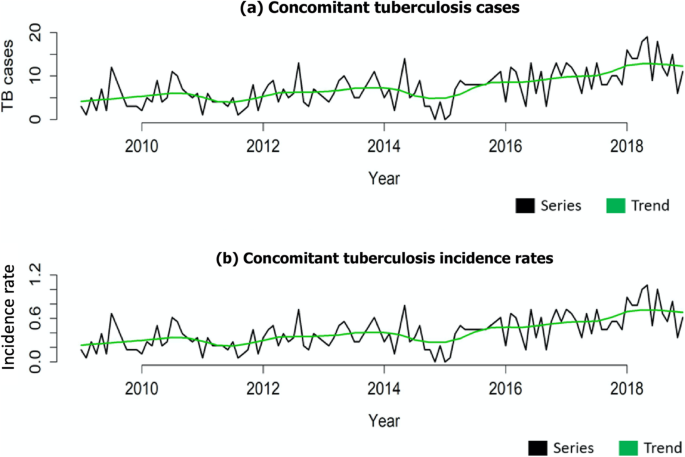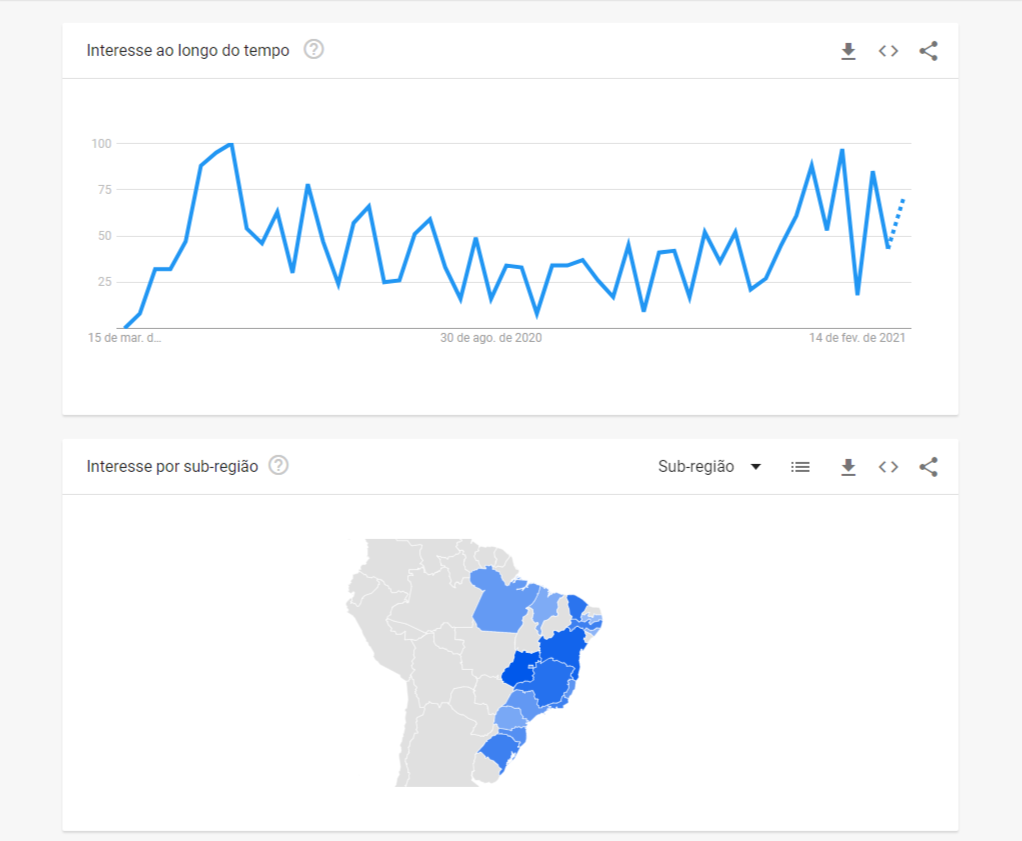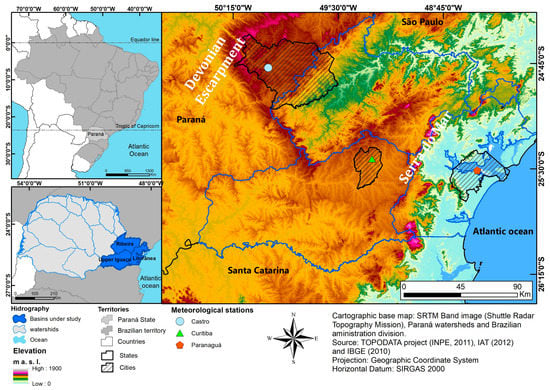- Home
- mjtrends bra
- Temporal trends in areas at risk for concomitant tuberculosis in a hyperendemic municipality in the region of Brazil, Infectious Diseases of Poverty
Temporal trends in areas at risk for concomitant tuberculosis in a hyperendemic municipality in the region of Brazil, Infectious Diseases of Poverty
4.7 (654) · $ 8.50 · In stock
Background Although preventable and curable, tuberculosis (TB) still occurs in poor or developing countries, mainly in metropolitan regions of larger cities. The disease is a serious public health problem, and is directly linked to social issues. We analyzed temporal trend variations in areas at risk for concomitant TB, and characterized the clinical and epidemiological profiles of cases in a hyperendemic municipality in the region of Brazil. Methods This ecological study was performed in the municipality of Manaus, in northern Brazil. The population comprised cases with concomitant pulmonary and extrapulmonary TB, registered on the Notifiable Diseases Information System (SINAN), between January 1, 2009 and December 31, 2018. For risk cluster detection, spatial and spatiotemporal scanning statistical techniques were used. The Spatial Variation in Temporal Trends (SVTT) approach was used to detect and infer clusters for significantly different time trends. Results Between 2009 and 2018, 873 concomitant TB cases were registered in Manaus. By using purely spatial scanning statistics, we identified two risk clusters. The relative risk (RR) of the clusters was 2.21 (95% confidence interval [CI]: 1.57–2.88; P = 0.0031) and 2.03 (95% CI: 1.58–2.58; P = 0.0029). Using space-time scanning, we identified a risk cluster with an RR of 3.57 (95% CI: 2.84–4.41; P = 0.014), between 2017 and 2018. For SVTT analyses, three clusters with spatial variations were detected in the significant temporal trends: SVTT 1 (P = 0.042), SVTT 2 (P = 0.046) and SVTT 3 (P = 0.036). Conclusions In Brazil, several TB-determining factors such as race/color, gender, low educational level and low income overlap in needy urban areas and communities, demonstrating that it is unlikely to reach the goals, agreed and launched with the END TB Strategy within the deadlines of international agreements, if there is no reduction in existing inequities determinants and risk of illness in the country.
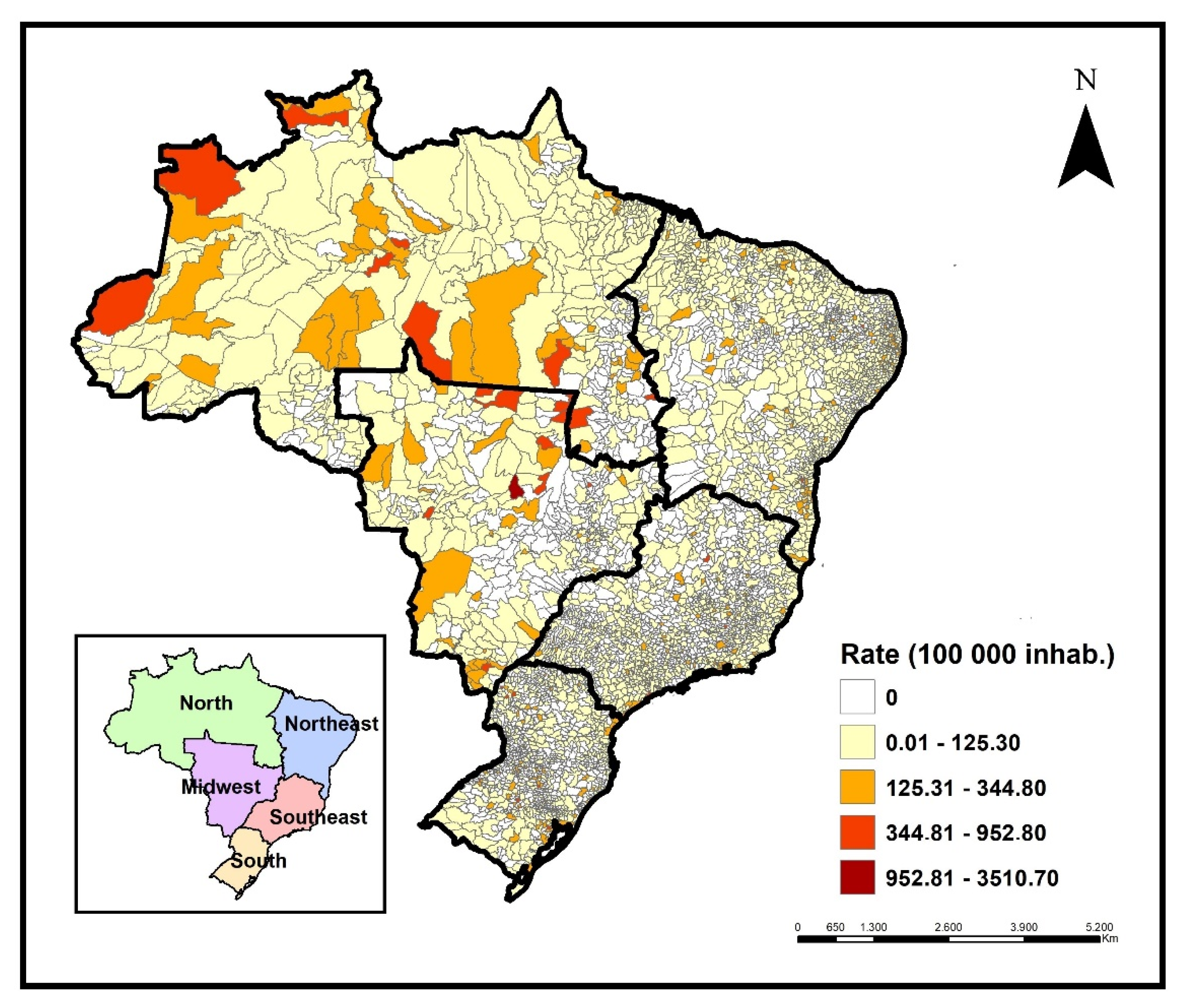
TropicalMed, Free Full-Text

Ecology, evolution, and epidemiology of zoonotic and vector-borne infectious diseases in French Guiana: Transdisciplinarity does matter to tackle new emerging threats - ScienceDirect

2008 - Union - World - Conference - WEB International Journal of Tuberculosis and Lung Disease, PDF, Tuberculosis
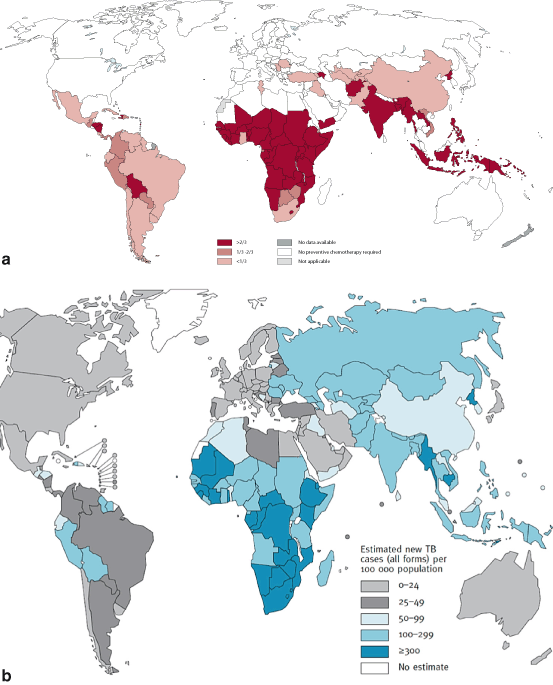
Helminth-M. Tb Co-Infection

PDF) Socioeconomic determination and spatial distribution of Tuberculosis/HIV co-infection in a state of Brazil

Influential factors and spatial–temporal distribution of tuberculosis in mainland China

Space-time analysis of tuberculosis (2016–2020) in South Punjab, Pakistan

EMERGING INFECTIOUS DISEASES from CDC. V27-N3 by PermaSafe Protective Coatings - Issuu
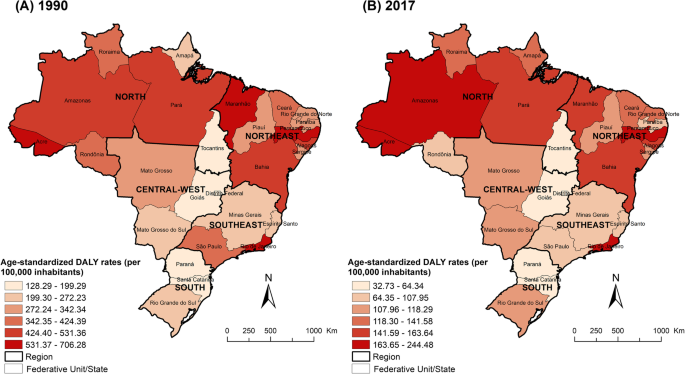
The burden of tuberculosis and attributable risk factors in Brazil, 1990–2017: results from the Global Burden of Disease Study 2017, Population Health Metrics

PDF) Temporal trends in areas at risk for concomitant tuberculosis in a hyperendemic municipality in the region of Brazil

Spatial inequality, infectious diseases and disease control

Gabriel Carrasco - Postdoctoral Researcher - UC San Diego

14th ICID - Poster Abstracts - International Society for Infectious
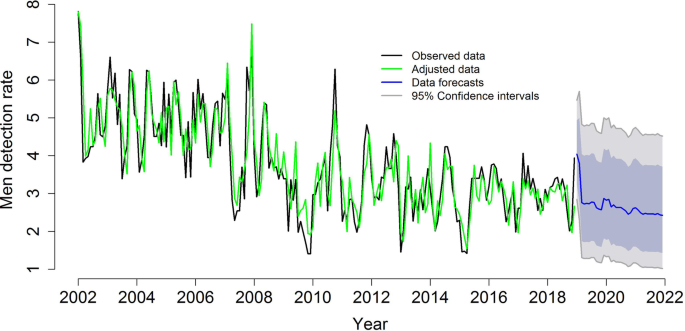
Tuberculosis forecasting and temporal trends by sex and age in a high endemic city in northeastern Brazil: where were we before the Covid-19 pandemic?, BMC Infectious Diseases



/product/41/4858142/1.jpg?6349)


